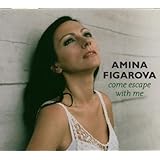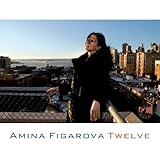
The playlist on John Ellis's new disc
"It's You I Like" (Criss Cross 2012) is very unusual, combining six Fred Rodgers songs with three Elliot Smith songs -- the upbeat Mr. Rodgers with the depressed, addicted, and sadly short-lived Smith who died at age 34 under mysterious circumstances. It makes for a bit of an unusual listen as well, as the back and forth of the two songwriters' tunes creates a bit of cognitive dissonance at times, but overall this is a very pleasurable CD. And low and behold, Ellis has done something many might have thought was close to the impossible -- he has made the music of Fred Rogers of Mr. Rogers' Neighborhood sound positively hip. Along with his bandmates Mike Moreno on guitar, Aaron Goldberg on piano, Matt Penman on bass, and Rodney Green on drums, Ellis has taken the six songs written by Fred Rogers, including of course his theme song "Won't You Be My Neighbor" which he plays a capella to close the disc, and with great imagination has turned each into a small tour de force of modern creative, but very mainstrem, jazz.
For those who do not know John Ellis, a little background. His bio says he was born in rural North Carolina and "grew up with a love of baseball, dewberry cobbler, and turkey and stuffing." He fell into music through "singing hymns in his father’s church, fooling around with Scott Joplin Rags on the piano, and marching in the high school band," and pretty soon was hooked on music as a career. He studied four years at the North Carolina School of the Arts, and then moved to New Orleans to begin his jazz studies, starting at the University of New Orleans, where he stayed one year, under the direction of legendary jazz patriarch Ellis Marsalis, before hitting the road first with Mr. Marsalis’s band, and then with others. He traveled as a cultural ambassador to South Africa, Namibia, Swaziland, Botswana, Zimbabwe, Madagascar, and Kenya with guitarist Todd Duke as part of the Jazz Ambasadors program sponsored by the Kennedy Center and USIA. Once back in New Orleans, he released his debut record, “
Language of Love” in 1996. After being a semi-finalist that year in the Thelonious Monk International Saxophone Competition, he moved to New York to continue his education at the New School jazz program, studying with George Garzone, Reggie Workman, and Joe Chambers among many others.
Upon graduation he returned to New Orleans to teach sax at Loyola University for a year, and rejoined the jazz scene there. From there back to New York/Brooklyn again and more playing and traveling and exploration of all sides of jazz, from his roots in the folk music of the south to New Orleans jazz and soul music among other musical genres. Ellis has worked widely and with artists from many branches of music including among others Norah Jones, Mos Def, Kurt Elling, Nic Payton, Aaron Goldberg, Gregoire Maret, Jason Marsalis, Charlie Hunter, and Alan Ferber. He also reentered the Thelonious Monk International Saxophone Competition in 2002, where this time he finished in second place.
.
In 2008 he made his big breakthrough album with his group Double-Wide,

"
Dance Like There's No Tomorrow" (Hyena Records 2008) which demonstrates his wonderful sax playing as well as his creative wit and humor in the service of some very deep-rooted traditional jazz. I have to admit, I was very late to the party on this disc, despite having read loads of good reviews at the time -- I just was not sure I was ready for a quartet that included Ellis on tenor and soprano sax and bass clarinet, Gary Versace on organ and accordion, Jason Marsalis on drums, but in particular (and no offense to the player) Matt Perrine on SOUSAPHONE. Not since Ray Draper led a session with Coltrane do I remember paying so much attention to the tuba/sousaphone as a jazz instrument with promise (excepting original ragtime/New Orelans jazz), but here Perrine demonstrates great flexibility in what he does with it. Meanwhile, I was also concerned to see titles like "Trash Bash", "Three-legged Tango in Jackson Square", "Tattooed Teen Waltzes With Grandma", or "Zydeco Clowns on the Lam." But once you put this CD on, you will immediately see that everything makes perfect sense, including the sousaphone, which acts sometimes like a bass and carries the meter, and other times like trombone with strong melody lines or harmonies with the sax and organ; and also brings in that old New Orleans tradition that Ellis was trained with. And the song titles may be tongue in cheek, but the songs themselves are a combination of soul jazz, New Orleans jazz, tango, zydeco, and just good old straght-ahead jazz. The mood ranges from some lovely ballads like "Tattooed Teen Waltzes with Grandma" and "Prom Song", to the tango of "Three-Legged Tango in Jackson Square" and zydeco "Zydeco Clowns on the Lam." to the straight ahead upeat fun of "All Up in the Aisles." Ellis and crew will have you dancing in the aisles (or living room) and smiling throughout this clever, creative and highly listenable disc.

Now Ellis is back with the songs of Fred Rogers and Elliot Smith with another CD that has an interesting range of moods, from the jaunty Rogers' tunes to the melancholy moods of Smith's songs. The liner notes refer to this as a "yin-yang program." which catches the overall mood. Ellis states he was looking to do something with both composer's music, and feels this program balances their contributions and allows him to create jazz from some non-traditional souces. He was not a Mr. Rogers devotee growing up, but in his music discovered a songwriter that he felt came right out of the American jazz tradition, with strong melodies and hooks, some quirkiness, and a feeling for being honest and straght-forward with the audience. In Smith, he sought to bring the haunting beauty and emotion to his play, using the "melodies and classical harmony in a jazz setting." Balancing these songs, along with one by Frederick Hollander for a Doctor Seuss movie, was a challenge, and for the most part Ellis succeeds, although as I said with some getting used to the significant contrasts between adjacent songs on the recording.
A tour through the CD. It begins with a jaunty, bouyant tenor sax right up front for Rogers' "What Do You Do", a brief bass interlude, and some more tenor play before going into the improvised section, and what is immediately evident is how strong Rogers' melodies were. The improvisations play nicely with the same upbeat sensibilities, with Goldberg's piano a highlight. Throughout the piece the strong drumming underscores the toe-tapping nature of the song.
The first changeover to a Smith tune, Memory Lane", was jarring to me, and I was also disappointed by the thin sound, to my ear, of the opening tenor sax. This was the only piece that I was not a big fan of, although it was certainly expressive of the pain that Smith put into his songs, particularly the plaintive notes of Moreno's guitar.
Back up again with the upbeat toe-tapper "It's You I Like," with the strong mellow tenor tone returning and a lightening fast Goldberg solo displaying his sensitive touch on the keys. Then back to Smith's "Everything Means Nothing to Me" -- contrast those titles! -- which has a melancholy melody that is almost atonal at times. But this was a far better rendering of Smith's music to me -- a rounder tenor tone in a lower register, a mournful guitar solo, and a lot of echo play between the instruments providing an otherworldly feel. The guitar and piano together was particularly haunting near the conclusion of the song. With "Let's Think of Something To Do" Ellis takes down the tempo of a Rodgers' song and makes it a very mellow ballad, with some nice colorings provided by Green on the drums. The Hollander piece "Because We're Kids" next is similarly low keyed in tempo, and features Penman on bass playing the lead, followed by a low key Moreno, and at the very end a tinkling of the high register piano keys reminiscent of a musicbox. All this makes for a lovely little fantasy piece.
After three low key songs, Ellis goes uptempo again with "You Are Special" (needless to say by Rogers), and then follows with Waltz #1 by Smith, which features the woody low tones of the bass clarinet. This is a very nicely played and rather pretty if somewhat mournful piece. The New Orelans beat of "It's Such a Good Feeling" rouses the spirits as a closer for the quintet, which leaves one last song, the classic tune "Won't You Be My Neighbor", in this case a solo tour-de-force by Ellis, who improvises and bends the melody in some very clever and delightful ways.
Criss Cross always does a nice job with its CDs and this one is no different -- a great set of players led by a strong soloist in Ellis, and some worthy tunes. Despite my reservation about the juxtaposition of Rogers and Smith, I think this is a good listen for anyone who appreciates straight ahead modern jazz. And as I think of it, it also might be a great way to introduce young kids to the merits of jazz in a very easy and accessible way -- who better than Fred Rodgers to do so?

 Shai Maestro is likely a new name to most of you who are reading this, although he has supported some fine CDs in the past few years on piano and other keyboards. I first became aware of his playing on such discs as "Song Without Words" by Yuval Cohen, "Opus One' by Shauli Einav, "Carving " by Amos Hoffman (I am a sucker for the Oud), and three by Avashai Cohen (bass) -- "Carving", "Seven Seas", and "Aurora". If you have any of these in your collection, and all are very nice albums, then go back and listen closely to the pianist, who demonstrated on each an unerring ear for comping as well as a great touch and expressiveness on his solos.
Shai Maestro is likely a new name to most of you who are reading this, although he has supported some fine CDs in the past few years on piano and other keyboards. I first became aware of his playing on such discs as "Song Without Words" by Yuval Cohen, "Opus One' by Shauli Einav, "Carving " by Amos Hoffman (I am a sucker for the Oud), and three by Avashai Cohen (bass) -- "Carving", "Seven Seas", and "Aurora". If you have any of these in your collection, and all are very nice albums, then go back and listen closely to the pianist, who demonstrated on each an unerring ear for comping as well as a great touch and expressiveness on his solos.  By the way, you might notice the pattern here, that each of the discs is led by a prominent Israeli leader, and in fact Maestro is another in that long line of recent stars on that scene and already a well-known name in his native country.
By the way, you might notice the pattern here, that each of the discs is led by a prominent Israeli leader, and in fact Maestro is another in that long line of recent stars on that scene and already a well-known name in his native country.  So I was certainly ready for his first outing as a leader, and it has come with the recent release of the eponymously titled trio recording "Shai Maestro, Ziv Ravitz, and Jorge Roeder" (Laborie Records 2012). Ravitz on drums and Roeder on bass are long time trio mates of Maestro, and their sympatico is evident on what to my ears is an outstanding display of expressive and dynamic play. Maestro wrote all but one song here, that exception being a traditional song "Kalimankou Denkou." From the outset one is in the hands of a trio that is lyrical, that flys high when the mood calls for it, and possesses equal parts of dynamism and restraint on the various songs. Maestro writes lovely and lyrical melodies which are interwoven together by the shifting between the three players.
So I was certainly ready for his first outing as a leader, and it has come with the recent release of the eponymously titled trio recording "Shai Maestro, Ziv Ravitz, and Jorge Roeder" (Laborie Records 2012). Ravitz on drums and Roeder on bass are long time trio mates of Maestro, and their sympatico is evident on what to my ears is an outstanding display of expressive and dynamic play. Maestro wrote all but one song here, that exception being a traditional song "Kalimankou Denkou." From the outset one is in the hands of a trio that is lyrical, that flys high when the mood calls for it, and possesses equal parts of dynamism and restraint on the various songs. Maestro writes lovely and lyrical melodies which are interwoven together by the shifting between the three players. 




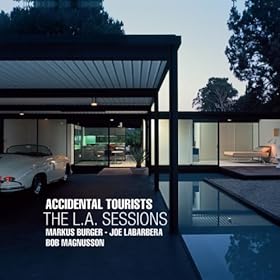

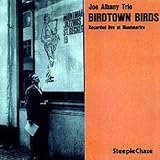
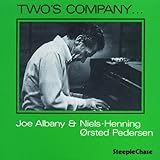
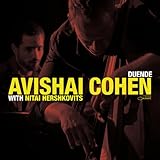
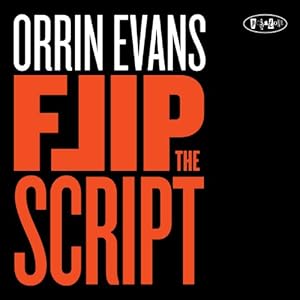
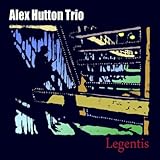

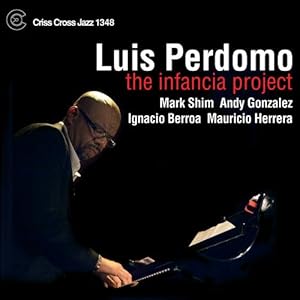

 The playlist on John Ellis's new disc "It's You I Like" (Criss Cross 2012) is very unusual, combining six Fred Rodgers songs with three Elliot Smith songs -- the upbeat Mr. Rodgers with the depressed, addicted, and sadly short-lived Smith who died at age 34 under mysterious circumstances. It makes for a bit of an unusual listen as well, as the back and forth of the two songwriters' tunes creates a bit of cognitive dissonance at times, but overall this is a very pleasurable CD. And low and behold, Ellis has done something many might have thought was close to the impossible -- he has made the music of Fred Rogers of Mr. Rogers' Neighborhood sound positively hip. Along with his bandmates Mike Moreno on guitar, Aaron Goldberg on piano, Matt Penman on bass, and Rodney Green on drums, Ellis has taken the six songs written by Fred Rogers, including of course his theme song "Won't You Be My Neighbor" which he plays a capella to close the disc, and with great imagination has turned each into a small tour de force of modern creative, but very mainstrem, jazz.
The playlist on John Ellis's new disc "It's You I Like" (Criss Cross 2012) is very unusual, combining six Fred Rodgers songs with three Elliot Smith songs -- the upbeat Mr. Rodgers with the depressed, addicted, and sadly short-lived Smith who died at age 34 under mysterious circumstances. It makes for a bit of an unusual listen as well, as the back and forth of the two songwriters' tunes creates a bit of cognitive dissonance at times, but overall this is a very pleasurable CD. And low and behold, Ellis has done something many might have thought was close to the impossible -- he has made the music of Fred Rogers of Mr. Rogers' Neighborhood sound positively hip. Along with his bandmates Mike Moreno on guitar, Aaron Goldberg on piano, Matt Penman on bass, and Rodney Green on drums, Ellis has taken the six songs written by Fred Rogers, including of course his theme song "Won't You Be My Neighbor" which he plays a capella to close the disc, and with great imagination has turned each into a small tour de force of modern creative, but very mainstrem, jazz.  "Dance Like There's No Tomorrow" (Hyena Records 2008) which demonstrates his wonderful sax playing as well as his creative wit and humor in the service of some very deep-rooted traditional jazz. I have to admit, I was very late to the party on this disc, despite having read loads of good reviews at the time -- I just was not sure I was ready for a quartet that included Ellis on tenor and soprano sax and bass clarinet, Gary Versace on organ and accordion, Jason Marsalis on drums, but in particular (and no offense to the player) Matt Perrine on SOUSAPHONE. Not since Ray Draper led a session with Coltrane do I remember paying so much attention to the tuba/sousaphone as a jazz instrument with promise (excepting original ragtime/New Orelans jazz), but here Perrine demonstrates great flexibility in what he does with it. Meanwhile, I was also concerned to see titles like "Trash Bash", "Three-legged Tango in Jackson Square", "Tattooed Teen Waltzes With Grandma", or "Zydeco Clowns on the Lam." But once you put this CD on, you will immediately see that everything makes perfect sense, including the sousaphone, which acts sometimes like a bass and carries the meter, and other times like trombone with strong melody lines or harmonies with the sax and organ; and also brings in that old New Orleans tradition that Ellis was trained with. And the song titles may be tongue in cheek, but the songs themselves are a combination of soul jazz, New Orleans jazz, tango, zydeco, and just good old straght-ahead jazz. The mood ranges from some lovely ballads like "Tattooed Teen Waltzes with Grandma" and "Prom Song", to the tango of "Three-Legged Tango in Jackson Square" and zydeco "Zydeco Clowns on the Lam." to the straight ahead upeat fun of "All Up in the Aisles." Ellis and crew will have you dancing in the aisles (or living room) and smiling throughout this clever, creative and highly listenable disc.
"Dance Like There's No Tomorrow" (Hyena Records 2008) which demonstrates his wonderful sax playing as well as his creative wit and humor in the service of some very deep-rooted traditional jazz. I have to admit, I was very late to the party on this disc, despite having read loads of good reviews at the time -- I just was not sure I was ready for a quartet that included Ellis on tenor and soprano sax and bass clarinet, Gary Versace on organ and accordion, Jason Marsalis on drums, but in particular (and no offense to the player) Matt Perrine on SOUSAPHONE. Not since Ray Draper led a session with Coltrane do I remember paying so much attention to the tuba/sousaphone as a jazz instrument with promise (excepting original ragtime/New Orelans jazz), but here Perrine demonstrates great flexibility in what he does with it. Meanwhile, I was also concerned to see titles like "Trash Bash", "Three-legged Tango in Jackson Square", "Tattooed Teen Waltzes With Grandma", or "Zydeco Clowns on the Lam." But once you put this CD on, you will immediately see that everything makes perfect sense, including the sousaphone, which acts sometimes like a bass and carries the meter, and other times like trombone with strong melody lines or harmonies with the sax and organ; and also brings in that old New Orleans tradition that Ellis was trained with. And the song titles may be tongue in cheek, but the songs themselves are a combination of soul jazz, New Orleans jazz, tango, zydeco, and just good old straght-ahead jazz. The mood ranges from some lovely ballads like "Tattooed Teen Waltzes with Grandma" and "Prom Song", to the tango of "Three-Legged Tango in Jackson Square" and zydeco "Zydeco Clowns on the Lam." to the straight ahead upeat fun of "All Up in the Aisles." Ellis and crew will have you dancing in the aisles (or living room) and smiling throughout this clever, creative and highly listenable disc. 






